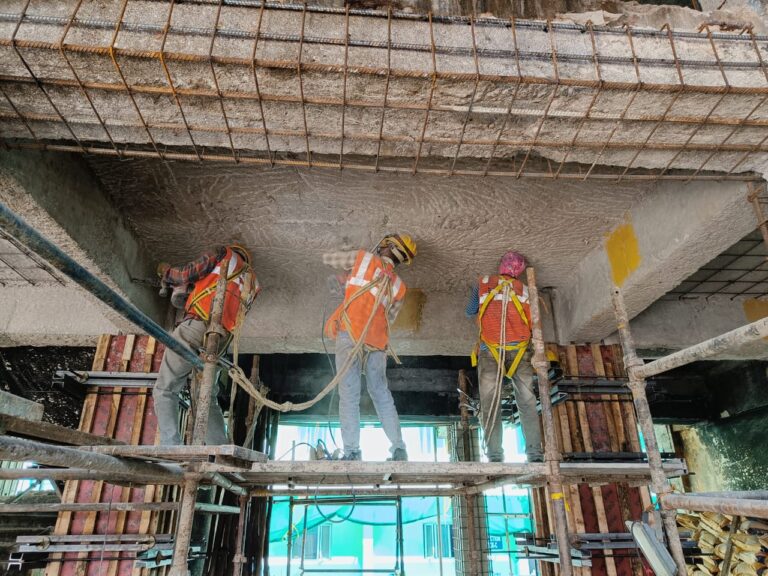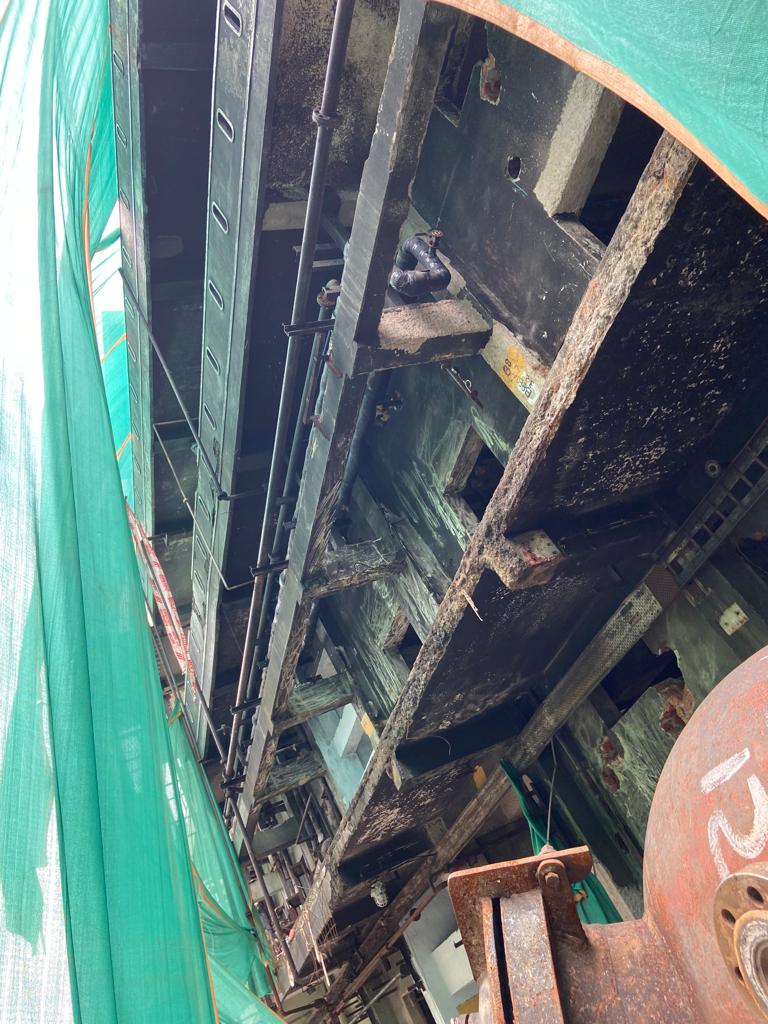Retrofitting a Fire-Damaged Building
Retrofitting a Fire-Damaged Building in a Chemical Plant, Restoring Safety After Fire and Blast Damage


A severe blast and subsequent fire in a chemical plant caused extensive damage to its reactor building and the storage facility. The building, a Reinforced Cement Concrete (RCC) structure comprised of a ground floor and two upper floors suffered critical structural damage. Upon inspection, the building exhibited significant cracks, spalled concrete, and exposed reinforcements. The building’s stability needed thorough assessment and restoration to ensure safety and continued operations.
Our team was engaged to deliver specialized retrofitting solutions that would restore structural stability, protect against future deterioration, and allow the plant to resume operations quickly and safely
Damage Assessment
Initial assessment revealed critical damage to the RCC structure:
- Cracks in beams, columns, and slabs.
- Spalled concrete exposing reinforcement bars, reducing load-bearing capacity.
- Thermal effects leading to material degradation.
Advanced Structural Recovery After Fire and Blast Damage
We conducted a Non-Destructive Testing (NDT) program to determine the extent of the damage. The investigation confirmed significant structural damage in multiple load-bearing members, necessitating immediate and advanced retrofitting measures.
We designed a multi-step retrofitting plan tailored to the facility’s industrial safety requirements:
- Concrete Surface Preparation: Before beginning any repair work, the damaged surfaces were prepared to ensure proper bonding between existing concrete and repair material. We used mechanical chipping to remove all loose material and roughen the surface to create an adequate profile for new material to bond effectively.
- Epoxy Grouting: The epoxy resin bonds the cracked surfaces together, restoring the integrity of the structural elements. We injected epoxy grout to repair cracks in the beams, columns, and slabs, preventing further deterioration and restoring structural damage.
- Concrete Jacketing: This technique involved encasing the damaged beams, columns, and slabs with a new layer of concrete to restore and improve their load-bearing capacity. The added concrete layer —reinforced with steel — enhances the strength and stiffness of the structural elements.
- Fireproofing Surfaces: After completing structural repairs, a protective coating was applied to the restored structural elements to ensure the longevity and resilience. This coating helps in protecting the structure from environmental factors such as moisture, chemicals and temperature variations.
We adopted a phased approach to execute the repair and rehabilitation process to minimize disruption to the plant’s operations — starting with stabilizing the critical structures first. This approach allowed for continuous assessment and adjustment of the restoration techniques based on the evolving needs of the severely damaged structure.
Restoring Safety and Ensuring Resilience
The comprehensive restoration process successfully restored the building’s structural integrity, ensuring the safety and functionality of the facility for manufacturing and storage. As a result, we achieved:
- Improved Structural Stability: The use of concrete jacketing and epoxy injection significantly improved the load-bearing capacity and overall stability of the structure.
- Increased Durability: The application of a protective coating ensured long-term resistance to environmental degradation, reducing the likelihood of future damage.
- Minimal Operational Disruption: Strategic planning and phased restoration plan allowed the facility to continue required operations during the repair process, minimizing downtime and financial implications.
- Enhanced Safety: The restored building meets stringent safety standards, providing a safe environment for employees and sensitive chemical processing.
Conclusion
This project demonstrates our expertise in complex structural restoration services for high-risk industrial structures. Our advance repair techniques not only restored the structure’s integrity but also enhanced its long-term resilience.


